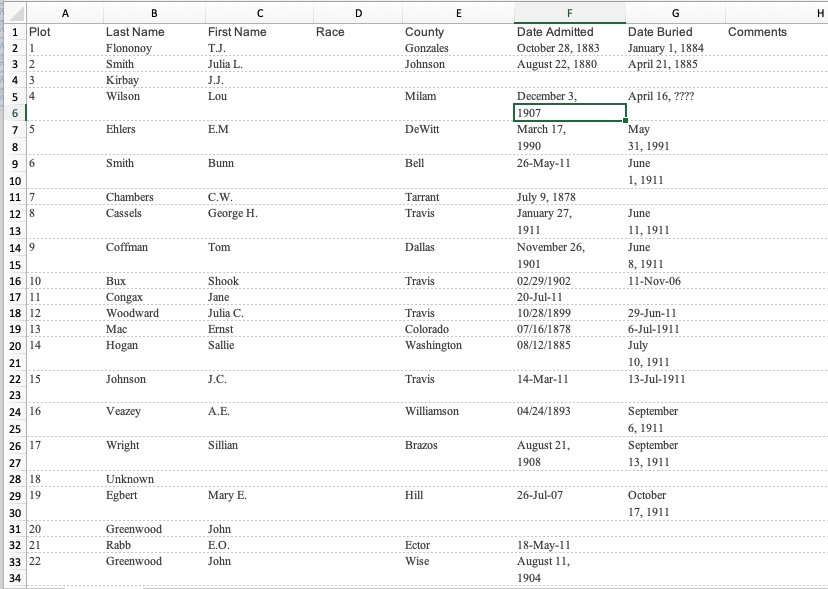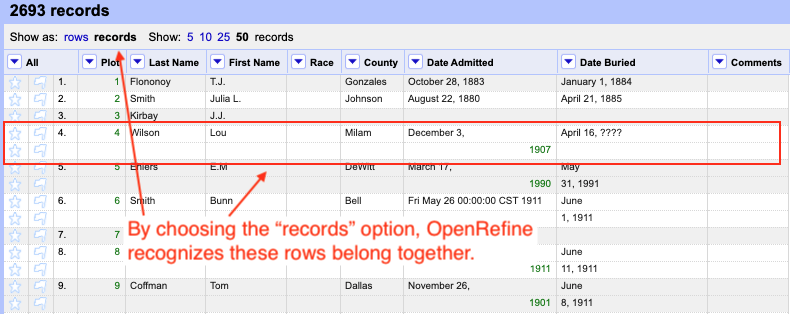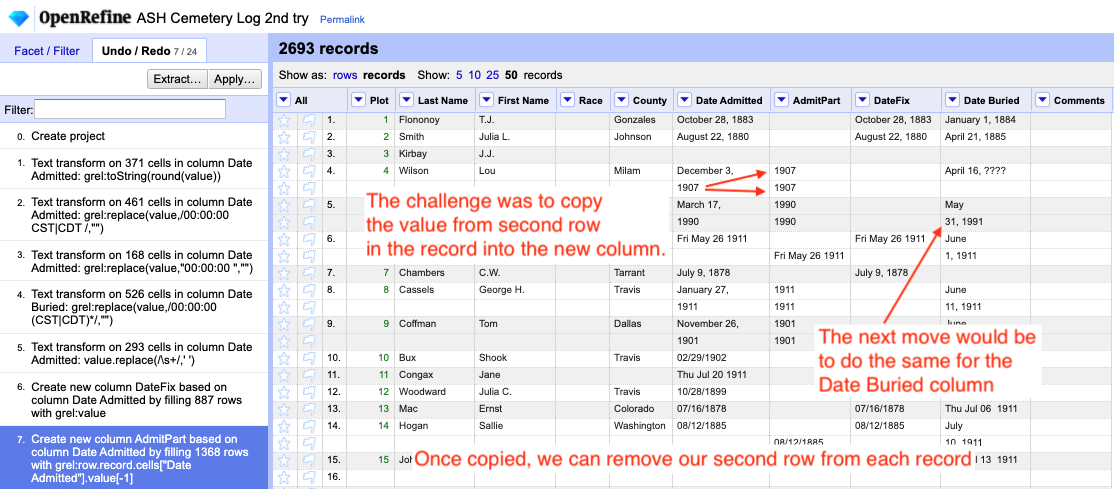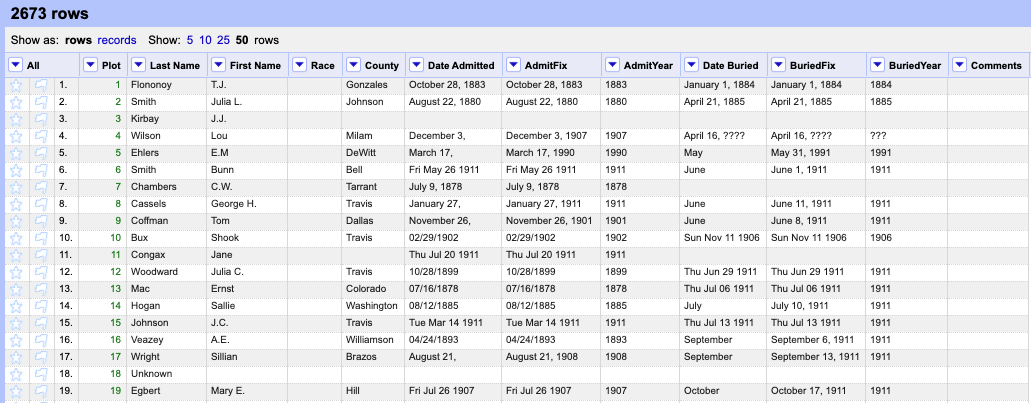ASH cemetery
An Austin news organization had a list of burials at the Austin State Hospital cemetery and wanted to summarize how many people were buried each year. When the data came to me it was in a spreadsheet but it might have been converted from a PDF or some other format.
The original data

Note on “Plot 4” of the data that the Date Admitted breaks into two lines, creating a new spreadsheet row. We needed to get the “year” value for each date in Date Admitted and Date Buried so we could count the records by year.
(I just needed to extract the year, so I didn’t go through the effort to fix the varying date formats.)
Records vs rows
OpenRefine has an option that allows us to show related rows as single records, opening up some additional programming options for us. Once imported, I choose to show as records:

I was able to use GREL functions to copy the second “row” for the record into a new column so I could get the entire date on a single row to manage later.
I used Edit column > Add column based on this column with the following expression: row.record.cells["Date Admitted"].value[-1].

The result
I was able to create parts of dates and put them back together again to get a common-enough date format to extract the last four characters – the year – from the fixed date.

If the full date was important, more work could’ve been done to normalize those.